Notes from the Field: A Growers Perspective – Ben Kraus Chat #12
Welcome back to our thirteenth and final report of 2025 Notes from the Field! As a reminder, this year’s Notes from the Field follows Ben Kraus with Gwenyn Hill Farm (Waukesha). The goal of this newsletter is to hear from the grower’s perspective and foster connection between Wisconsin fruit growers.
This week, Ben is about half way through picking apples and pears and the day-neutral strawberries are still going strong at about 63lb (50qt) per week. The fall-bearing raspberries are still producing, though slowing down significantly. As for pest management, in the coming weeks Ben will focus on fall cleanup and sanitation then will shift to preparing and planning for next year.
I visited with Ben on Monday, September 22 to take a look at remaining fruit and identify areas of focus after harvest. As a reminder, Gwenyn Hill has a 4-acre block of tree fruit and berries that sits along a north-facing slope, and ~150 table grape vines bordered by saskatoons and rhubarb across the road. There are two rows of new (established 2025) day-neutral strawberries next to the cut flower planting as well (see photo below). Since my last visit, the weather has been warm with moderate precipitation. According to NEWA, over the past ~two weeks (September 9 – 22), there was an average high temperature of 77.6℉, average low temperature of 58.3℉, and a total of 1.62” of precipitation near Gwenyn Hill (NEWA – Colgate, WI).
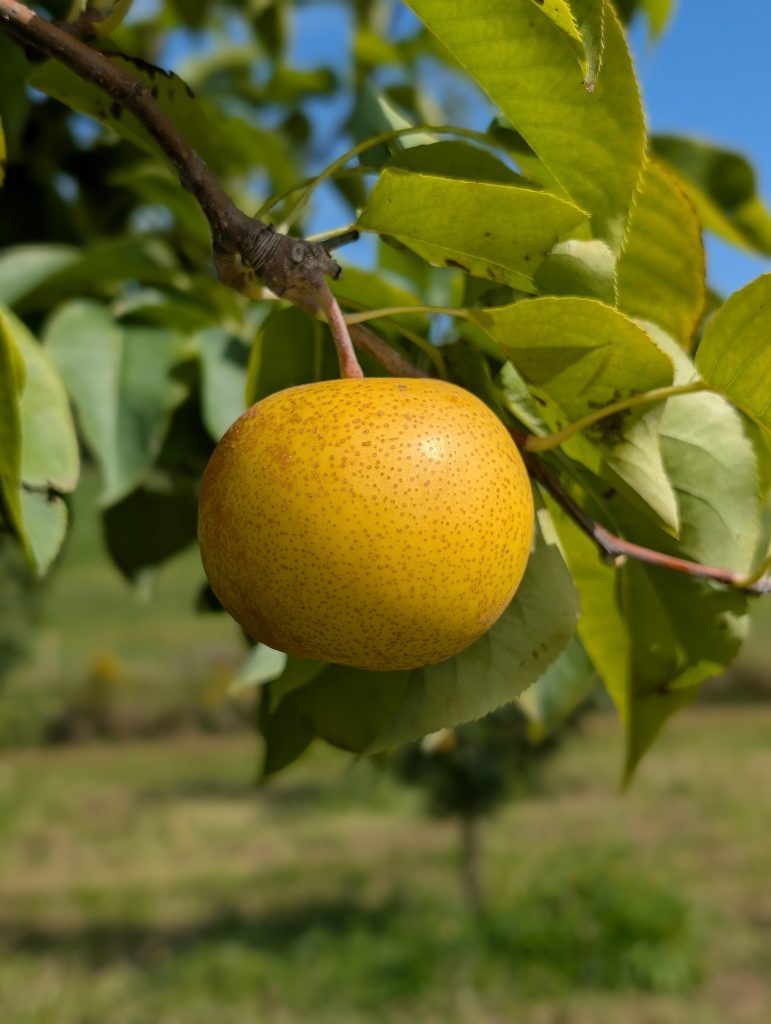
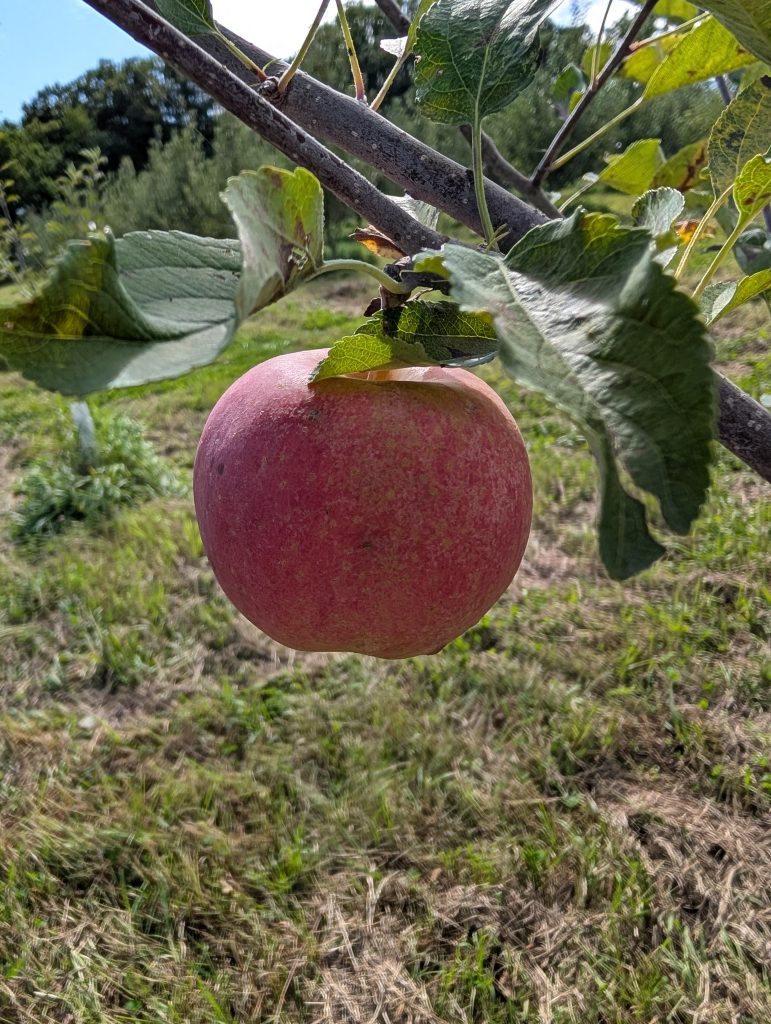
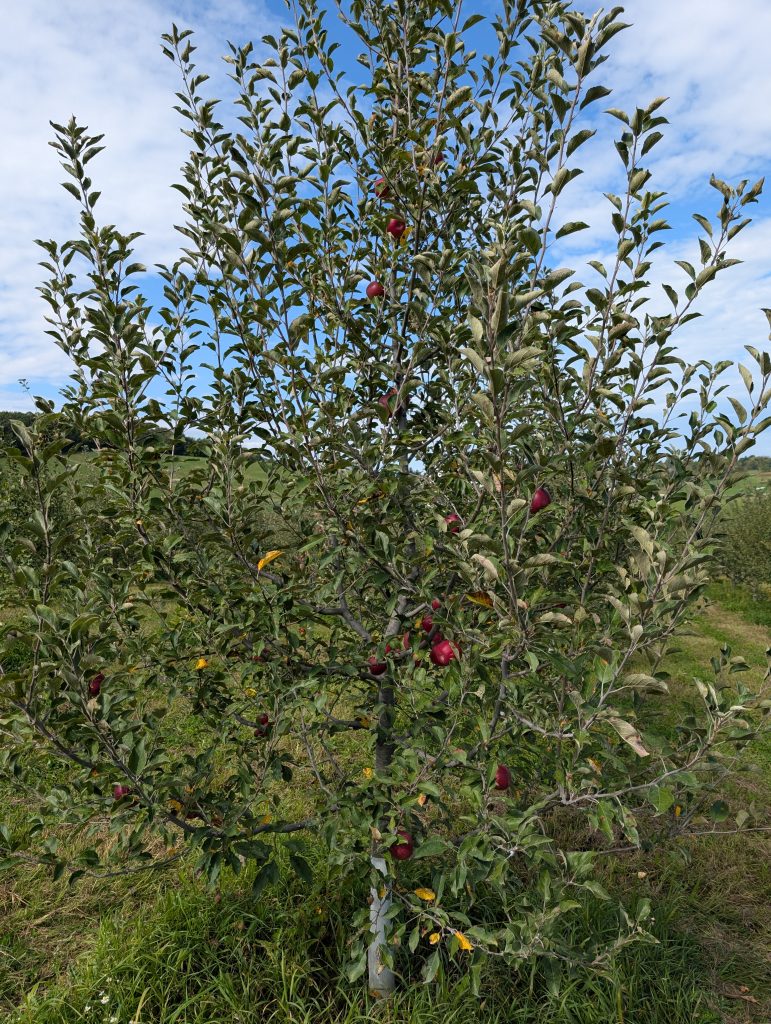
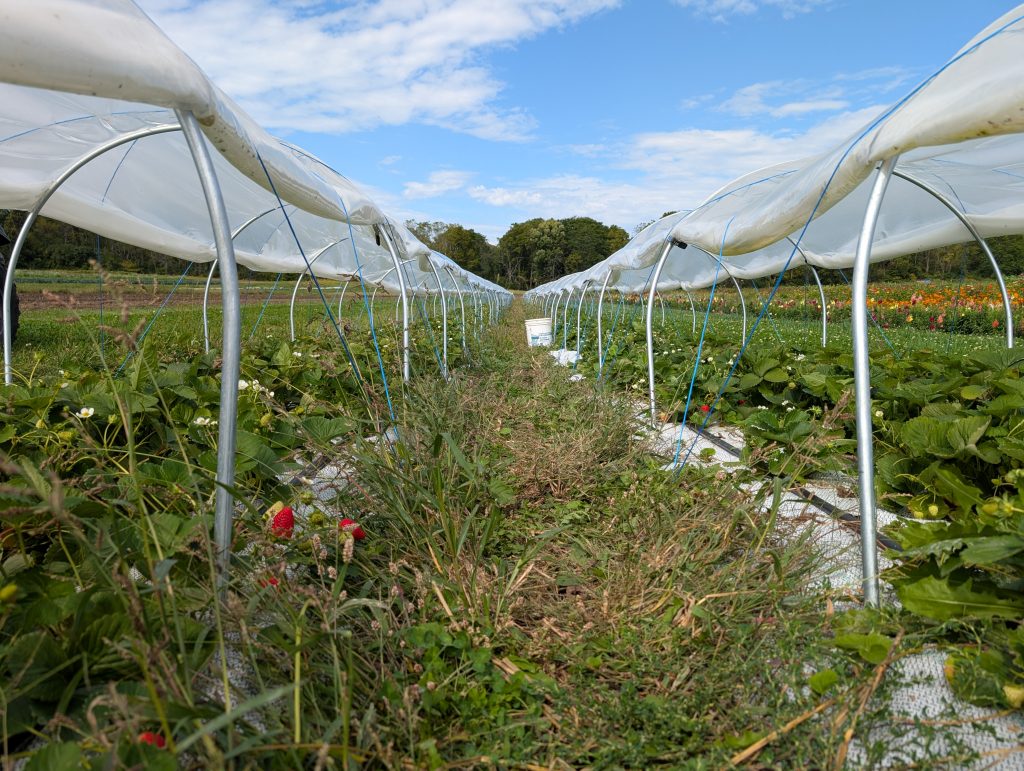
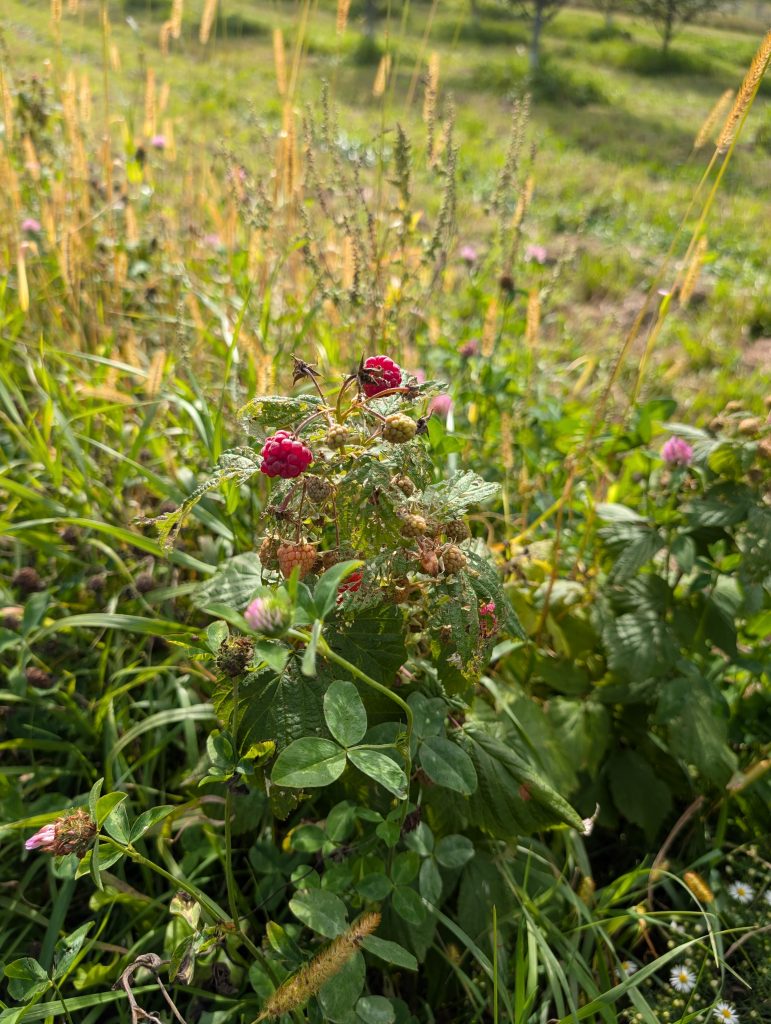
This fall, Ben plans to stay on top of orchard sanitation to help manage insect and disease pressure. He recently mowed the orchard alleyways and will follow up with string trimming around tree trunks to remove any remaining weeds.
Once leaves have completely fallen, Ben will use a blower and mulcher to clear leaves and any remaining fallen fruit from around the bases of trees. This encourages quicker decomposition, and reduces the risk of overwintering disease inoculum that may reinfect trees next growing season. In blocks with high disease pressure, some growers may choose to fully remove leaf litter and fruit from the orchard floor as an added sanitation measure.
As part of a new trial, Ben will be installing fabric skirts at the base of trees. These skirts are intended to suppress weed growth and make fruit drop cleanup easier during the growing season.
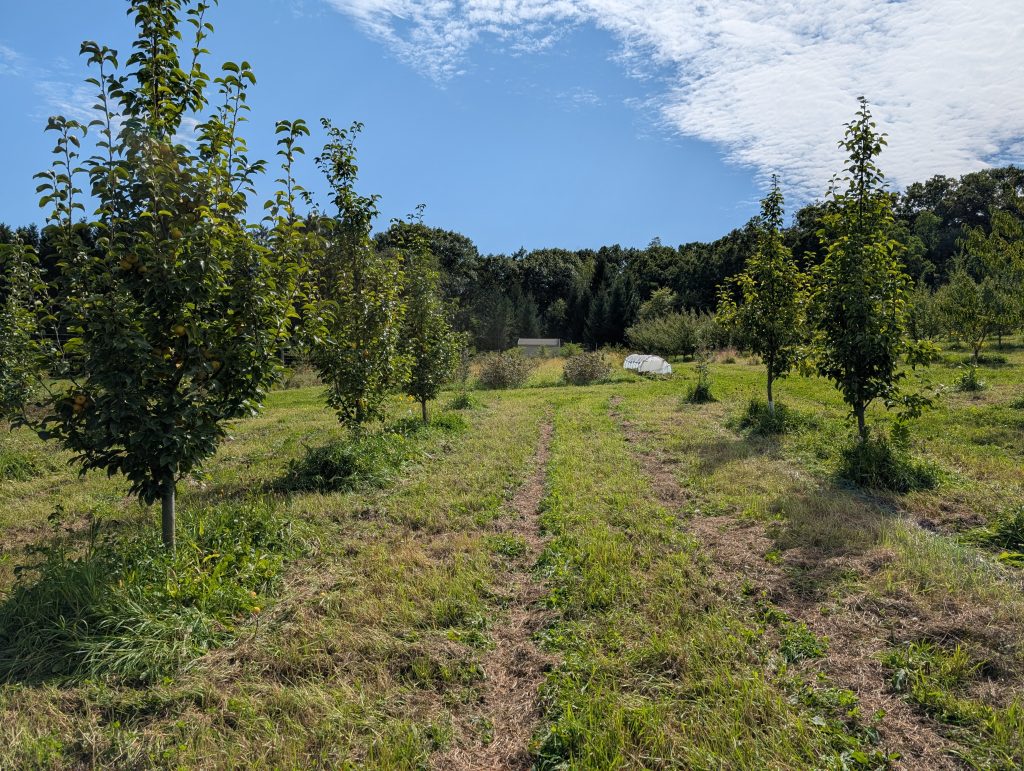
After all the picking, mowing, blowing and chopping is completed, Ben will shift his focus to pest management planning for next year. His first step is identifying new or alternative organic products to trial. Sourcing these materials can be challenging, especially in rural areas, so Ben works with multiple suppliers like Wilbur Ellis, 7-Springs, Arbico, and Cultivate, depending on product availability and pricing.
In addition to chemical controls, Ben is also prepping and planning use of non-chemical pest management strategies. For example, plum curculio pressure is quite high at Gwenyn Hill. As a reminder, plum curculio damage fruit by leaving crescent shaped egg-laying scars, or small feeding wounds. To help limit impacts, next spring plans to trial using sticky tape around tree trunks in blocks with high plum curculio pressure, aiming to intercept adult insects before they reach the canopy.
That’s all for this season’s Notes from the Field. Huge thank you to Ben Kraus and Gwenyn Hill for hosting me this summer, and thank YOU for following along.
Good luck and best wishes to all WI Fruit Growers through the winter!
This article series is NOT intended to be prescriptive for other orchards. It is simply an opportunity for our readership to hear from other growers about their experiences growing fruit crops in Wisconsin.
Growing the same crop does not always justify the same practices. Management decisions at your farm should be tailored to your operation and consider location, regional climate, disease and pest history, and your varieties.
The mention of a product is NOT an endorsement. Always follow the instructions on product labels and consult weather stations (ex. NEWA) in your area for current weather forecast and disease and pest prediction models.
This article was posted in Notes from the Field and tagged Ben Kraus, Josie Dillon, Notes from the Field.
